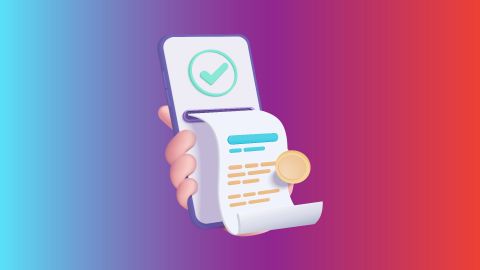This article explores the causes of power shortages, their impacts, and possible solutions to address these challenges.
Power shortages and solutions
-
Power shortages occur when the demand for electricity exceeds the available supply, leading to disruptions in service and a range of negative consequences for both individuals and the economy. These shortages can manifest as rolling blackouts, reduced voltage, or complete power outages, affecting daily life and business operations. The causes of power shortages are multifaceted, often stemming from a combination of factors such as inadequate infrastructure, reliance on outdated energy sources, and increasing energy demands due to population growth and industrialisation. The impacts of power shortages can be severe, leading to economic losses, decreased productivity, and a decline in the quality of life for affected communities. Understanding the underlying causes and consequences of power shortages is crucial for developing effective strategies to address this pressing issue.
Power shortages are a challenge, but solutions like renewable energy and improved grids are paving the way for stability. While these long-term fixes are in progress, staying on top of your electricity bills is key. BBPS platforms like Bajaj Pay make it easy to pay bills on time, ensuring your connection stays uninterrupted, even during tough times.Major causes of power shortages
- Overreliance on fossil fuels: Many regions depend heavily on fossil fuels for electricity generation, which can lead to supply constraints due to fluctuating fuel prices and environmental regulations.
- Ageing infrastructure: Outdated power generation and distribution systems can result in inefficiencies and increased vulnerability to failures, contributing to power shortages.
- Rapid industrialisation and urbanisation: As populations grow and urban areas expand, the demand for electricity increases significantly, often outpacing the ability of utilities to supply it.
- Policy and regulatory challenges: Inconsistent energy policies and regulatory hurdles can hinder investment in new power generation projects and renewable energy sources, exacerbating supply issues.
Impact of power shortages on economy and daily life
Power shortages can have profound effects on both the economy and daily life. Economically, businesses may face production delays, increased operational costs, and reduced competitiveness due to unreliable power supply. This can lead to job losses and decreased economic growth. For individuals, power shortages can disrupt daily activities, affecting everything from cooking and heating to communication and transportation. Essential services such as healthcare and education may also suffer, as hospitals and schools rely on consistent electricity for their operations. Overall, power shortages can create a cycle of economic decline and reduced quality of life for affected communities.Sustainable solutions to mitigate power shortages
To address power shortages effectively, sustainable solutions must be implemented. These solutions include investing in modernising infrastructure to improve efficiency and reliability, diversify energy sources to reduce dependence on fossil fuels, and promote energy conservation practices among consumers. Additionally, governments and utilities can encourage the development of renewable energy projects, such as solar, wind, and hydropower, to increase the overall energy supply. By adopting a holistic approach that combines technological advancements, policy reforms, and public awareness, communities can work towards a more stable and sustainable energy future.Transition to renewable energy sources
Transitioning to renewable energy sources is a critical step in mitigating power shortages and ensuring a sustainable energy future. Renewable energy sources, such as solar, wind, and hydropower, offer the potential to provide clean, reliable, and abundant energy. By investing in these technologies, countries can reduce their reliance on fossil fuels, lower greenhouse gas emissions, and enhance energy security. The transition to renewables not only addresses power shortages but also contributes to economic growth and job creation in the emerging green energy sector.Solar energy: benefits and implementation
Solar energy harnesses sunlight to generate electricity, making it a clean and renewable resource. The benefits of solar energy include reduced electricity bills, decreased reliance on fossil fuels, and minimal environmental impact. Implementing solar energy systems involves installing solar panels on rooftops or in solar farms, which can be connected to the grid or used for off-grid applications. Governments can incentivise solar adoption through subsidies, tax credits, and net metering policies, making it an attractive option for both residential and commercial users.Wind energy: harnessing wind power
Wind energy is generated by converting the kinetic energy of wind into electricity using wind turbines. This renewable energy source is abundant and can be harnessed on both land and offshore. The benefits of wind energy include low operational costs, minimal environmental impact, and the ability to generate electricity in remote areas. To implement wind energy projects, developers must conduct site assessments, secure permits, and invest in turbine technology. Governments can support wind energy development through favourable policies and incentives, promoting its growth as a viable energy source.Hydropower: utilising water resources
Hydropower generates electricity by harnessing the energy of flowing or falling water. It is one of the oldest and most reliable forms of renewable energy, providing a consistent power supply. The benefits of hydropower include low emissions, the ability to provide base-load power, and the potential for energy storage through pumped storage systems. Implementing hydropower projects involves constructing dams or run-of-the-river systems, which require careful environmental assessments and community engagement. By investing in hydropower, countries can enhance their energy security and reduce their reliance on fossil fuels.
-
Recharge and Pay Bills
Mobile Prepaid
Mobile Postpaid
Broadband Bill Payment
Electricity Bill Payment
Bajaj Finserv App for All Your Financial Needs and Goals
Trusted by 50 million+ customers in India, Bajaj Finserv App is a one-stop solution for all your financial needs and goals.
You can use the Bajaj Finserv App to:
You can use the Bajaj Finserv App to:
- Apply for loans online, such as Instant Personal Loan, Home Loan, Business Loan, Gold Loan, and more.
- Explore and apply for co-branded credit cards online.
- Invest in fixed deposits and mutual funds on the app.
- Choose from multiple insurance for your health, motor and even pocket insurance, from various insurance providers.
- Pay and manage your bills and recharges using the BBPS platform. Use Bajaj Pay and Bajaj Wallet for quick and simple money transfers and transactions.
- Apply for Insta EMI Card and get a pre-approved limit on the app. Explore over 1 million products on the app that can be purchased from a partner store on Easy EMIs.
- Shop from over 100+ brand partners that offer a diverse range of products and services.
- Use specialised tools like EMI calculators, SIP Calculators
- Check your credit score, download loan statements and even get quick customer support—all on the app.
Frequently asked questions
What are the main causes of power shortages?
Major causes include overreliance on fossil fuels, ageing infrastructure, rapid industrialisation, and policy challenges.
How do power shortages impact the economy?
Power shortages can lead to production delays, increased operational costs, job losses, and decreased economic growth.
What are some sustainable solutions to mitigate power shortages?
Solutions include modernising infrastructure, diversifying energy sources, promoting energy conservation, and investing in renewable energy projects.
What role do renewable energy sources play in addressing power shortages?
Renewable energy sources provide clean, reliable, and abundant energy, reducing dependence on fossil fuels and enhancing energy security.
How can individuals reduce their energy consumption?
Individuals can reduce energy consumption by using energy-efficient appliances, unplugging devices, and practising energy conservation habits.
Show More
Show Less




